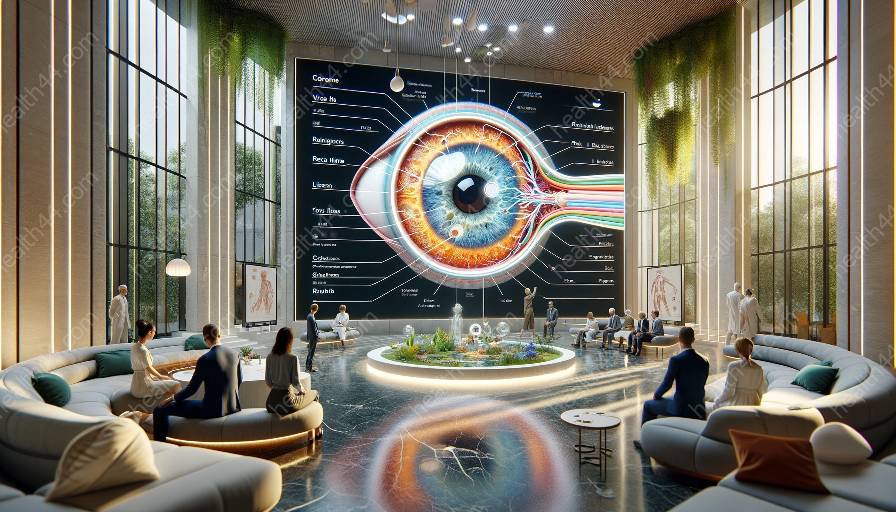Embark on a journey to understand visual development, congenital eye disorders, and their intricate relationship with eye anatomy and vision rehabilitation.
Understanding Visual Development
Visual development refers to the process through which a baby's vision matures and becomes more sophisticated over time. During the first few months of life, babies can primarily see light and movement. However, as they grow, their visual acuity and ability to distinguish colors, shapes, and details improve.
By the age of 2-3, a child's visual system has typically developed to a level similar to that of an adult. This development is crucial for their overall learning and perception of the world around them.
Exploring Congenital Eye Disorders
Congenital eye disorders are vision problems that are present at birth and can affect the structure or function of the eye. These conditions can vary widely in severity and range from mild refractive errors to more complex conditions such as cataracts, glaucoma, and retinal disorders.
Some congenital eye disorders may be hereditary, while others can be attributed to environmental factors or developmental abnormalities during pregnancy. Early detection and appropriate management of these conditions are essential for preventing long-term vision impairment.
Connecting with Eye Anatomy
The human eye is a marvel of biological engineering, comprising various interconnected structures that work together to capture and process visual information. Key components of eye anatomy include the cornea, iris, lens, retina, and optic nerve.
The cornea and lens play a critical role in focusing incoming light onto the retina, while the retina contains specialized cells called photoreceptors that convert light signals into electrical impulses for transmission to the brain. The optic nerve carries these signals to the visual processing areas of the brain, where the complex task of interpreting visual stimuli takes place.
Engaging in Vision Rehabilitation
Vision rehabilitation encompasses a range of techniques and interventions aimed at maximizing the visual function of individuals who have experienced vision loss or impairment. This may include the use of assistive devices, adaptive strategies, and specialized training to enhance the remaining vision and promote independent living.
For individuals with congenital eye disorders, vision rehabilitation can be particularly valuable in enabling them to optimize their visual abilities and adapt to the challenges presented by their specific condition. Through personalized programs, individuals can learn to use their existing vision more effectively and develop compensatory strategies for daily activities.
Conclusion
Visual development and congenital eye disorders are integral aspects of the human visual system, intricately connected to eye anatomy and vision rehabilitation. Understanding the complexities of these topics can provide insights into the remarkable capabilities of the visual system and the potential avenues for supporting individuals with visual challenges.





















